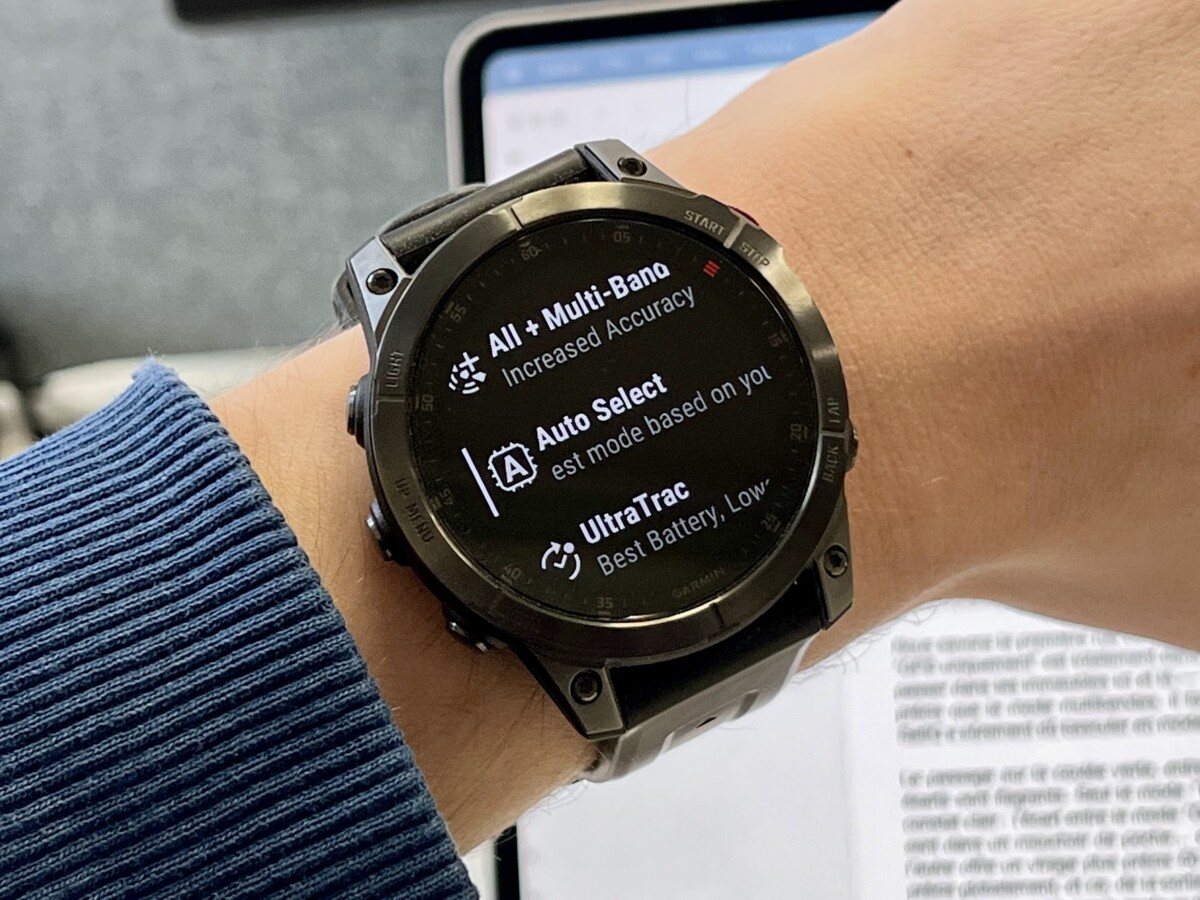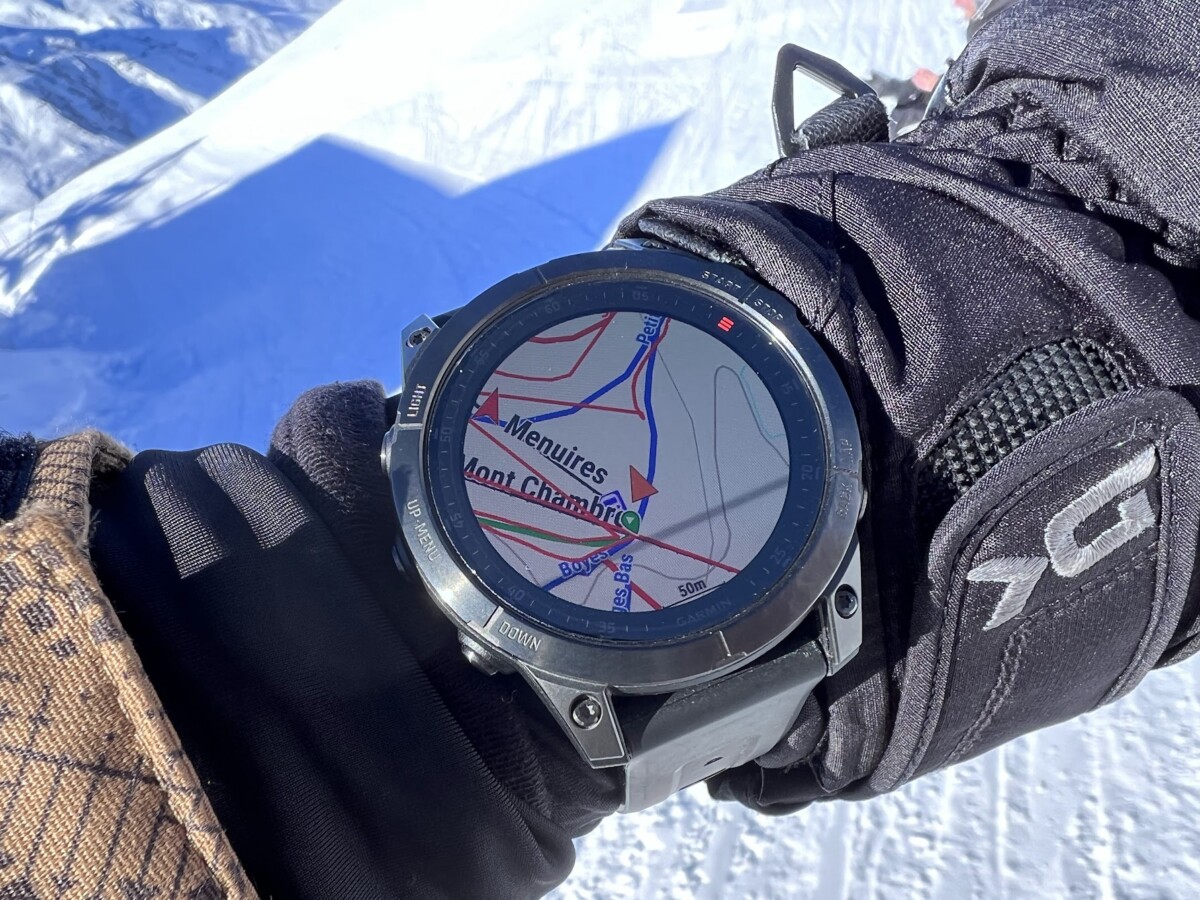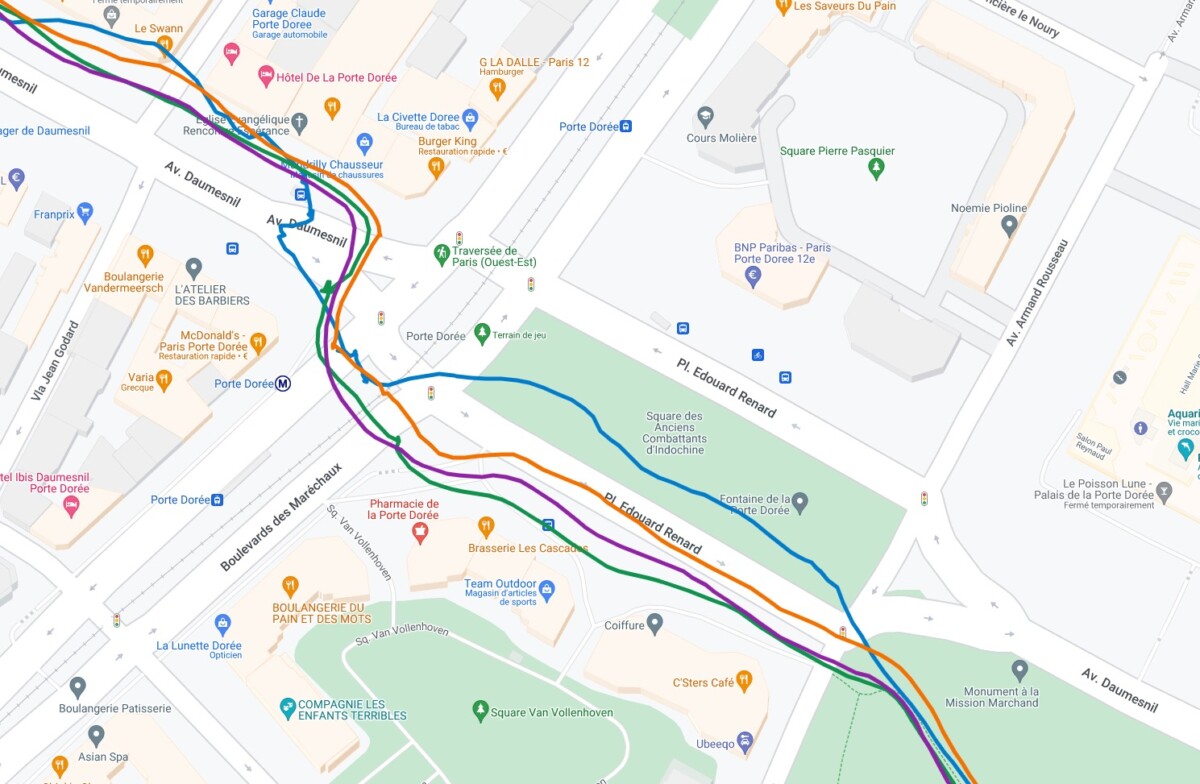Some Garmin watches offer a new GNSS mode. SatIQ technology promises the perfect balance between tracking accuracy and battery life. Explanations, test and opinion.
There are several satellite positioning systems in the world, each known by an abbreviation. The most famous constellation of satellites is American and is the source of a beautiful misnomer: GPS, for Global Positioning System. Other systems operational today include the European constellation Galileo, but also GLONASS (Russian), QZSS (Japanese) and BeiDou (Chinese).
Watches, bike computers and other telephones can now connect to several constellations, or even receive several frequencies from satellites. The most curious will be able to understand all these nuances thanks to our file dedicated to the geolocation of smartphones and connected watches.
We focus here on a new Garmin featuresupposed to switch intelligently between different modes of geolocation in order to guarantee good precision while preserving autonomy.
Garmin SatIQ, what is it?
Garmin watches offer different levels of geolocation accuracy, depending on the constellations they connect to. To be exhaustive, let’s take the latest high-end models of the brand as an example. These are the ones with the most options. Here are the GNSS modes offered on these models:
- GPS (the watch only relies on the GPS constellation);
- All systems (the watch communicates with GPS, Galileo, GLONASS, QZSS and BeiDou constellations);
- All Systems + Multiband (the watch receives several satellite frequencies for maximum accuracy);
- Auto Select (Garmin SatIQ, the feature we are going to explain to you today).
The further down the list, the more precise the mode… and the less battery life is preserved. That’s where the new SatIQ feature — the last on the list — is supposed to come in.

SatIQ technology takes care of automatically switch between simple GPS mode, all-system mode and multi-band mode, depending on the situation. If the watch understands that the environment in which it is located is open enough to allow a sufficient level of forecast in simple GPS, it will select this mode. Conversely, if the user engages in more complex environments for the watch, the latter switches to all systems + multiband mode – in the city between buildings or in the mountains surrounded by rock walls, for example.
The premise is simple: why use the most consuming GNSS mode (multiband) on certain portions that are clear enough to allow almost equivalent precision with a much less consuming mode (single GPS)? It is therefore on the reception quality of the GNSS signal that the SatIQ mode is based, with one idea in mind: strike the right balance between autonomy and precision.
Garmin explains on this subject that the multiband mode “is only used about 15% of the time during an activity“. The new SatIQ mode would thus make it possible to theoretically achieve the precision of the multiband mode throughout the race while suffering a limited loss of autonomy – on 15% of the time in this example.
Attention: with SatIQ, only the watch decides. Everything is done in the background. Once the activity is over, it is also not possible to view which GNSS mode changes have been made and when.

To sum up, while staying in multiband mode will give you the most accurate tracing possible, SatIQ mode aims to get closer to that accuracy, while saving battery power. This mode is therefore recommended for people looking to maximize the autonomy of their Garmin watch without sacrificing GNSS precision. Those who don’t want to take the lead will also appreciate this feature: no need to think about the route of their race and change GNSS mode beforehand.
Compatible Garmin Watches
At the time of writing, early January 2023, here are the watches compatible or soon to be compatible (sometimes in alpha or beta version for the moment) with the Garmin SatIQ functionality:
You will have understood it, Garmin watches being compatible with the GNSS mode “All Systems + Multibandare so with the SatIQ mode. Note that the Garmin Edge 1040 cycle computers also offer this new SatIQ mode.
Our opinion on Garmin SatIQ
That’s all well and good, but does it really work that well? We switched our Garmin epix (Gen 2) to SatIQ mode for a few weeks, on portions that we are used to using in multiband mode.
We are quite satisfied with the accuracy of the traces recorded with the SatIQ mode. We find the low margin of error to which the multiband mode had accustomed us during our tests of the fēnix 7, Forerunner 955 and Forerunner 255. The SatIQ functionality offers the same level of accuracy as the multiband mode in the complicated passages that we regularly go through – most likely because, precisely, the watch must switch to multiband accuracy in these environments. Otherwise, the tracks of our races in the more open environments seem just as precise as usual. To put it mildly, we naturally left the SatIQ mode engaged during our long outings in the mountains.
For further, we had fun taking the same path four times, using a different GNSS mode each time, in order to compare them. The four races were carried out in a row: the GNSS signals therefore benefited from the same weather.
The route in question presents a very complicated environment for any watch: three kilometers in the streets of Paris and an easier kilometer and a half in the Bois de Vincennes. We did our best to follow the same route for each race: placement on the sidewalk, pedestrian crossings… all while maintaining a constant pace – between 5:20 and 5:30 per kilometer.

We were also careful to start and stop running in the same place for the four races, and precisely, we quickly notice that the mode “GPS onlyis the farthest of the four tracks, both at the start and at the finish. In both cases, conversely, the multiband mode does the best and puts us exactly where we were. SatIQ mode really isn’t far off and is more accurate than “All systems“. The hierarchy therefore seems to be respected, for the moment. The four traces are captioned and available here.
| GPS Only | 4.39km |
| All Systems | 4.52km |
| All Systems + Multiband | 4.51km |
| SatIQ | 4.51km |
We know the first street of the layout is very complicated for watches, and it didn’t fail. The mode “GPS onlyis completely in the cabbage, but the multiband modes and SatIQ also make us pass in the buildings here and there – nothing abnormal. Subsequently, the SatIQ mode is surprisingly more accurate than the multiband mode. It must be said that, in this complicated environment, the SatIQ functionality must have switched to multiband mode – we are therefore dealing with a fairly equal fight.
The passage on the green corridor, between buildings, vegetation and small tunnels, is not forgiving: the differences are obvious. Only the mode “All systemscomes out with honours. What follows offers a clear observation: the difference between the modeGPS onlyis obvious, while the other three modes are in a pocket handkerchief… and very close to the route actually performed. If one does better here, the other offers a more precise turn 50 meters further. Still, here again, SatIQ mode is the most accurate overall, from the exit of the green corridor to the Bois Vincennes. The very end of the plot is still won by the multiband mode.

We have been as objective as possible in this test, but it clearly does not alone allow us to decide between the different modes. Still, without detailing street by street and turn by turn, the conclusion is clear: the battle is between the multiband mode and the SatIQ mode. In other words, the precision of the SatIQ mode seems to us, after several weeks of use, largely close to, or even equal to that of the multiband mode.
Autonomy
Let’s finish on the main thing: the potential gain in autonomy allowed by the SatIQ mode. We did not find an estimate provided by Garmin, but the brand reminds us of the difference in autonomy between the GNSS modes, taking the fēnix 7X Solar Sapphire as an example: 89 hours in “GPS only“, 63 hours in mode “All systems” and 36 hours only for the mode “Multiband“.
We wanted estimate the gain in autonomy with a practical test. Again, this is nothing scientific, but the result allows us to establish a good basis for the usefulness of SatIQ mode. Two tests were carried out: the first with the SatIQ mode, the second with the multiband mode.
We used the same settings on our epix (Gen 2), namely SpO2 measurement at night and Always on Display mode activated, both during the day and during sports activities. We did not use the integrated mapping for our cycling or running outings, in order not to exhaust the watch and distort the results. The routes and locations taken in both tests were exactly the same or very similar. Above all, the time of use of GNSS (in other words the time spent recording outdoor sports activities) is the same for both tests.
| Multiband Mode | SatIQ mode | |
|---|---|---|
| GNSS usage time | 7:50 a.m. | 7 h + 50 min in multiband |
| Autonomy | 4 days 4 hours | 4 days and 18 hours |
With approximately 8 hours of GNSS and daily use, multiband mode provides 100 hours of battery life for the epix (Gen 2), compared to 114 hours in SatIQ mode.
It is essentially the difference that counts here. It is around 14%, which is a huge gain. We’ll update this article as needed in the future, especially if we notice further long-term battery life improvements. For the moment, as you will have understood, this mode allows precision very close to that of the multiband mode, while offering a few hours of additional use. Why deprive yourself of it?
Do you use Google News (News in France)? You can follow your favorite media. Follow Frandroid on Google News (and Numerama).